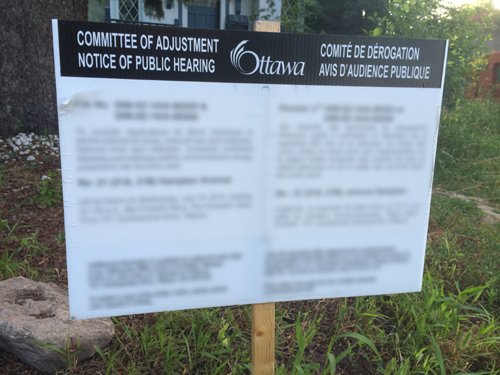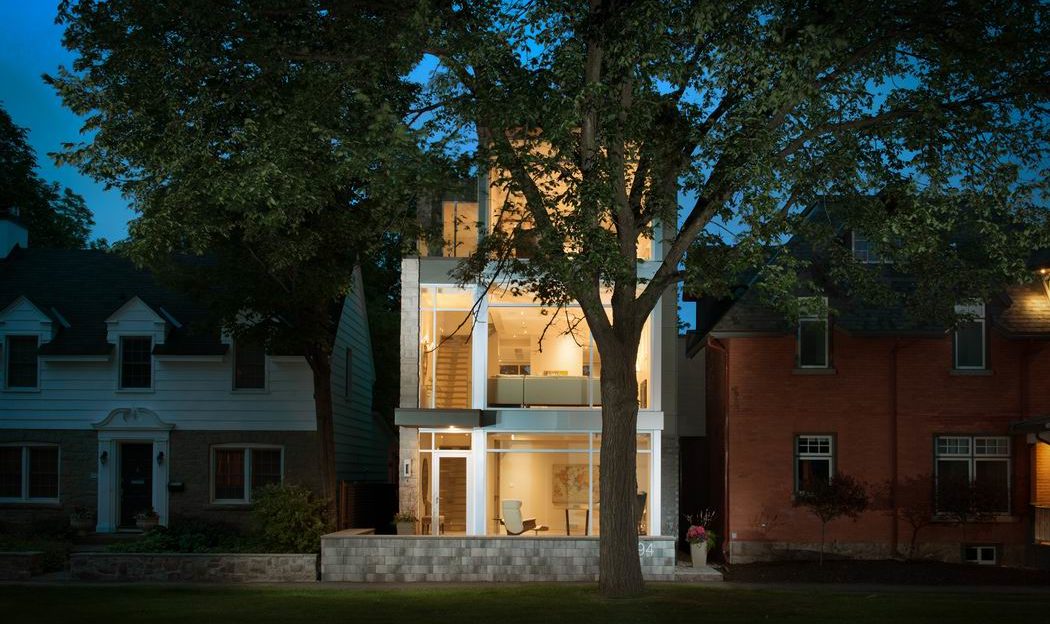Ottawa is undergoing a massive development boom and it’s not limited to just condos and suburban enclaves. Much of it is happening in neighbourhoods that have roots dating back 100+ years, with homes that have stood for decades.
But as society evolves and family needs change, so too do the expectations for modern living. The answer for many is urban infill.
There are some helpful things to know if you plan to build your own Ottawa urban infill home. Here are 5 of them:
#1: Find the right lot
Before you do anything else, you need to ask yourself where you want to build your infill home. For some, it may be the same lot you’re currently living on. You like where you live and plan to demolish and build on site.
Or you may have your sights set on a different neighbourhood. Westboro, McKellar Park, Hintonburg and Old Ottawa South are some of the most popular areas people are looking to build in.
Not surprisingly, supply is sparse, and prices reflect the market. People are paying anywhere from $500,000 to $900,000 for lots alone, depending on their location.
But don’t go pouncing on that leafy corner idyll until you’ve done your research. Recent changes in zoning may impact what you have in mind. For example, you may want a double car garage, but zoning doesn’t allow it. Or perhaps you’ve envisioned a pool, but the city says you don’t have enough space for it.
The best way to avoid disappointment is to consult with the pros who are intimately familiar with these vital details — builders and architects combined are your best bet for getting a handle on what your lot will and will not allow.
#2: Don’t fear the committee of adjustment
 It’s not uncommon to feel daunted by the necessity of acquiring permits and allowances from the city planning department. But, more often than not, the variances your new home require are actually quite minor and not likely to be met with opposition.
It’s not uncommon to feel daunted by the necessity of acquiring permits and allowances from the city planning department. But, more often than not, the variances your new home require are actually quite minor and not likely to be met with opposition.
Sometimes, there will be some compromise or give and take, but as long as you work closely with your architect and builder, chances are good your wishes will be granted — so long as it respects neighbourhood characteristics.
#3: Build to your exact wants and needs

When you’re designing and building a home from the ground up, it’s a rare opportunity to create the house of your dreams. It’s all about customization. Don’t make the mistake of glossing over the details. Think long and hard about what will make your home function optimally and look beautiful at the same time.
Are you a young family with pets? A mudroom with lots of storage is probably a good idea. Clothes horse? You may want to take this chance to mastermind the walk-in closet of your dreams. Maybe you’re a budding oenophile, in which case a wine cellar is a must!
So, start building those Pinterest boards and begin drafting that dream home wish list. Your builder, architect and interior designer will appreciate your foresight and do everything in their power to make your dreams a reality.
#4: Communicate with the neighbouring community
It’s no secret that building infill in one of Ottawa’s established neighbourhoods can have the potential to ruffle a few feathers — whether it’s the disruption caused by having a construction site nearby or heated opinions about design, people who live close to your new home may have something to say, and it might get contentious.
But it doesn’t have to be that way. Transparent communication is essential.
Connect with your neighbours. Explain your plans and be up front about what’s involved. Be courteous. Encourage mutual respect. And do what you can to quell any concerns.
And do all of this before you go to committee of adjustment. It indicates to the planning department that you’ve done your due diligence and it shows respect for your fellow community members.
Tell your architect and builder that garnering the support of your neighbours is important to you. This may mean getting the assurance of the construction team that concerted efforts will be made to keep noise down and maintain an orderly site.

Or it could mean the project management staff will make themselves available for questions that you as a homeowner may not be able to answer — things like: “Will this build disrupt my home’s foundation?” or “Will my garden be damaged?”
Bottom line, being neighbourly is what it’s all about. Respect and communication can go a long way in avoiding fences that could need mending down the line.
#5: Understand the timelines
The construction time required for an infill home averages about eight months from beginning to end. And in Ottawa’s climate this makes late spring the ideal time to begin a home-building project. Once the home’s exterior is fully framed, it’s entirely possible to work through the winter on the interior. But if frost hits and the exterior isn’t complete, work may come to a halt until spring thaw.
If you’re building on the site of your current home, you will need to make arrangements for temporary accommodation elsewhere. Month-to-month is ideal, which makes Airbnb a popular choice for many.
So, there you have it — building an Ottawa urban infill home takes some work. But boy, is the short-term pain worth the long-term gain.
You get a gorgeous home that has been custom designed and built for YOU. And as its name denotes, it’s a home that’s built in an already-established neighbourhood, complete with history, character, and urban infrastructure and amenities that can’t be beat.
It’s worth the effort.

